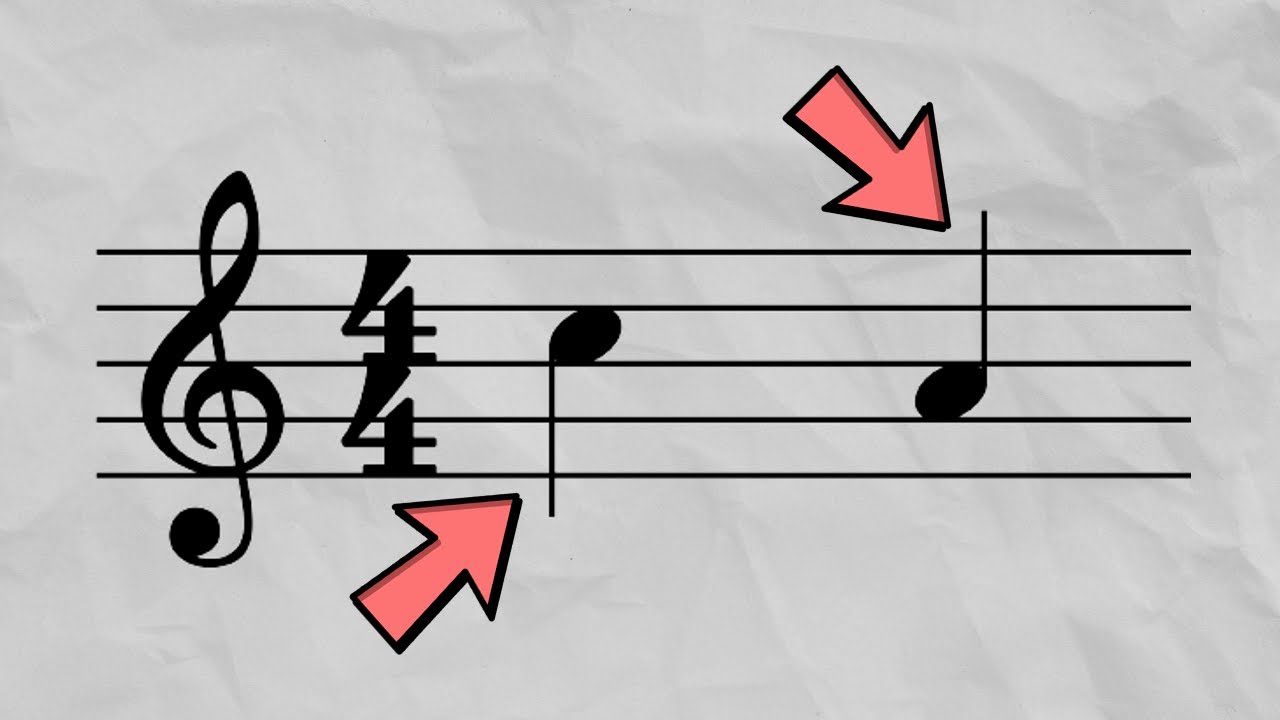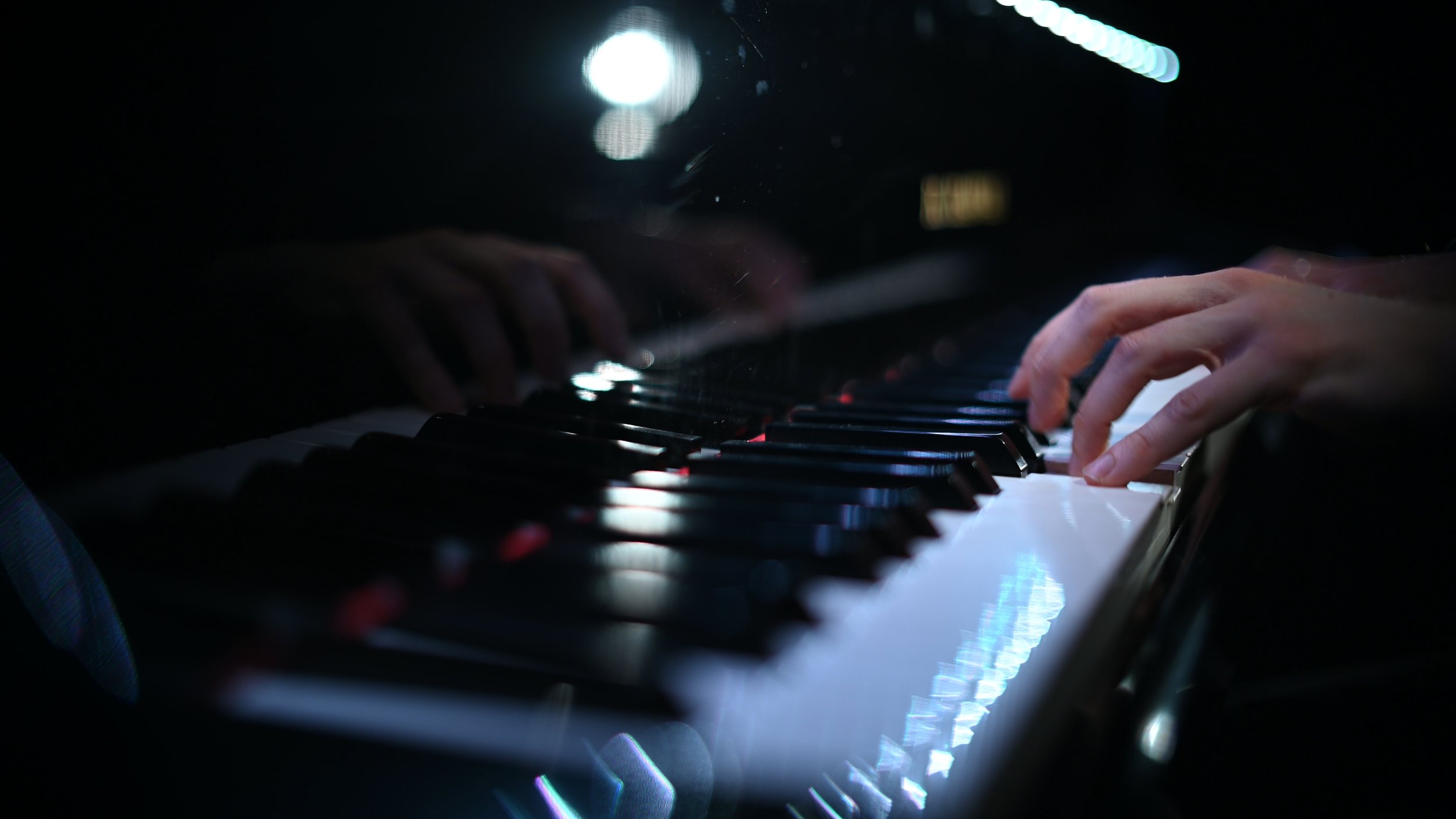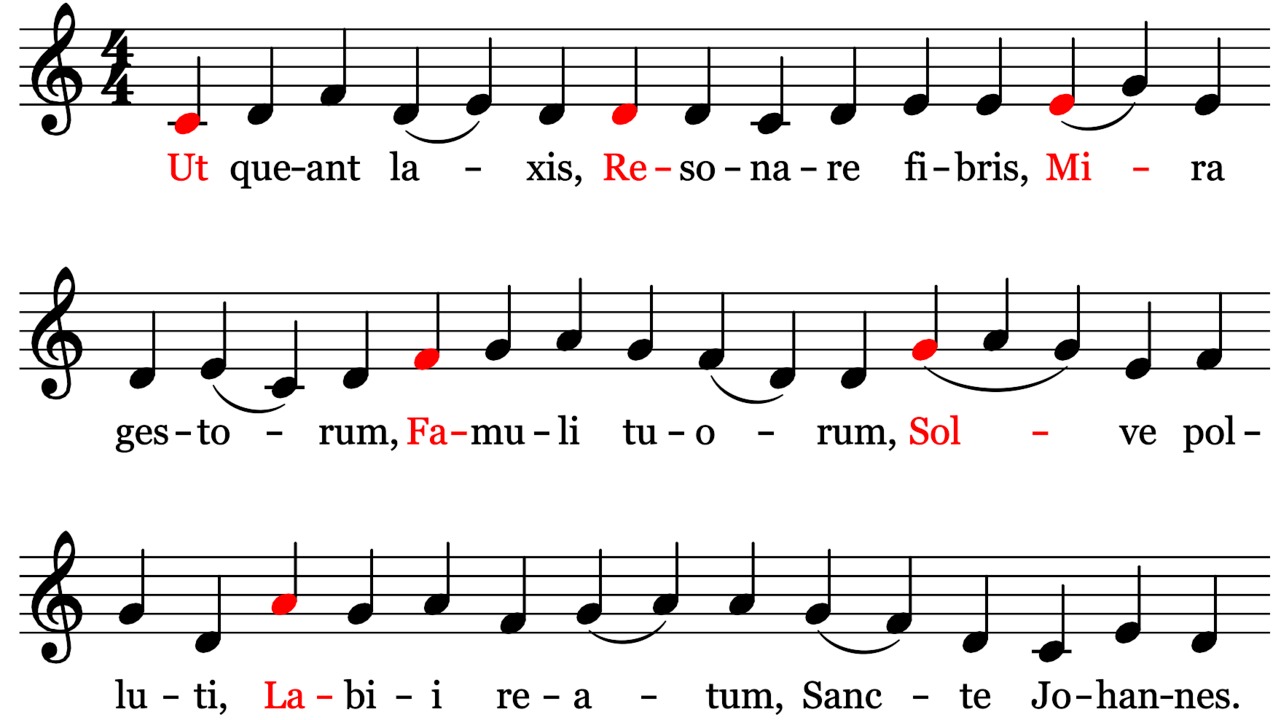Home>Events & Info>Note>What Does Each Music Note Mean?


Note
What Does Each Music Note Mean?
Published: December 5, 2023
Discover the meaning behind each music note and unlock the secrets of musical notation. Master the art of reading and interpreting notes with our comprehensive guide
(Many of the links in this article redirect to a specific reviewed product. Your purchase of these products through affiliate links helps to generate commission for AudioLover.com, at no extra cost. Learn more)
Table of Contents
Introduction
Music is a universal language that holds the power to convey emotions, tell stories, and bring people together. Behind the enchanting melodies and harmonies lies a system of notation that allows musicians to read and interpret musical compositions. Central to this system are music notes, which are the building blocks of music.
In this article, we will explore the world of music notes and unravel the meanings they hold. Whether you are a music enthusiast, a budding musician, or simply curious about how music is written, this guide will provide you with a comprehensive understanding of each music note and its significance.
Understanding music notes is akin to learning a new language. It gives us the ability to decipher the musical language and truly appreciate the artistry behind each composition. With this knowledge, you will be able to read and interpret sheet music, play an instrument, or even compose your own melodies.
So, let’s embark on this musical journey together as we dive into the magical world of music notes and discover the meaning behind each symbol.
The Basics of Music Notes
Music notes are the symbolic representations of different pitches and durations in music. They are written on a musical staff, which consists of five horizontal lines and four spaces. The position of each note on the staff indicates its pitch, while the shape of the note and additional symbols determine its duration and other musical elements.
There are seven basic music notes: A, B, C, D, E, F, and G. These notes form the foundation of the musical alphabet. The notes are represented by oval shapes placed on the staff. The position of each note on the staff corresponds to a specific pitch. For example, A is located on the first space of the staff, B is on the second line, C is on the third space, and so on.
In addition to the basic note shapes, music notes can also have flags, stems, and other symbols that affect their duration. A single note represents a specific duration of time, which can range from very short to very long. The duration of a note is determined by the shape of the note and the presence of additional symbols, such as flags or dots.
To further understand the duration of music notes, let’s take a look at some common note values:
- Whole Note (or Semibreve) – It is an open oval shape without a stem. It represents a long duration, typically lasting for four beats.
- Half Note (or Minim) – It is an open oval shape with a stem. It represents a duration of two beats.
- Quarter Note (or Crotchet) – It is a closed oval shape with a stem. It represents a duration of one beat.
- Eighth Note (or Quaver) – It is a closed oval shape with a stem and a flag. It represents a duration of half a beat.
These are just a few examples of the various note values that exist in music. By combining different note values, composers can create rhythmic patterns and melodies that make up a musical composition.
Now that we have established the basics of music notes, let’s move on to explore the treble clef notes, which are commonly used to represent the higher range of pitches in music.
The Treble Clef Notes
The treble clef, also known as the G clef, is a symbol that indicates the pitch range of the higher notes in music. It is commonly used for instruments such as the piano, violin, and flute. The treble clef is represented by a stylized letter “G” that curls around the second line of the staff.
Within the treble clef, there are specific notes that are commonly used and represented by their position on the staff. Let’s take a closer look at these notes:
- G – This note is located on the second line of the treble clef staff. It is easy to remember as it corresponds to the name of the clef itself, G clef.
- E – The note E is located on the first space below the treble clef staff.
- C – The note C is located on the first ledger line below the treble clef staff.
- A – The note A is located on the second space above the treble clef staff.
- D – The note D is located on the fourth line of the treble clef staff.
- B – The note B is located on the second ledger line above the treble clef staff.
- F – The note F is located on the fifth line of the treble clef staff.
These notes in the treble clef form the foundation for reading and playing music in the higher pitch range. Learning to identify and play these notes is essential for musicians who wish to explore melodies and harmonies in this range.
It’s important to note that the position of the notes on the treble clef staff can be altered by adding ledger lines above or below the staff. Ledger lines are short horizontal lines that extend the staff to accommodate notes that fall outside of its range. This allows for a broader range of pitches to be represented on sheet music.
Now that we have covered the treble clef notes, let’s move on to explore the bass clef, which represents the lower range of pitches in music.
The Bass Clef Notes
The bass clef, also known as the F clef, is a symbol that indicates the pitch range of the lower notes in music. It is commonly used for instruments such as the bass guitar, cello, and tuba. The bass clef is represented by a stylized letter “F” that curls around the fourth line of the staff.
Similar to the treble clef, the bass clef has specific notes that are commonly used and represented by their position on the staff. Let’s take a closer look at these notes:
- A – The note A is located on the third line of the bass clef staff.
- F – The note F is located on the fourth line of the bass clef staff. This is how the bass clef gets its name, “F clef”.
- D – The note D is located on the fifth line of the bass clef staff.
- G – The note G is located on the second line above the bass clef staff.
- E – The note E is located on the first space below the bass clef staff.
- B – The note B is located on the third space below the bass clef staff.
- C – The note C is located on the first ledger line below the bass clef staff.
These notes in the bass clef form the foundation for reading and playing music in the lower pitch range. Just like in the treble clef, ledger lines can be added above or below the staff to accommodate notes that fall outside of its range.
It’s worth mentioning that the bass clef and treble clef are often used together in piano music, where the right hand plays the treble clef notes and the left hand plays the bass clef notes. This division allows for a full range of pitches to be played on the piano.
Now that we have explored both the treble clef and bass clef notes, let’s delve into the concept of ledger lines and how they extend the range of the musical staff.
Ledger Lines and Beyond
The musical staff is designed to accommodate a specific range of pitches. However, there are instances where notes fall outside of this range, either in the higher or lower direction. To notate these pitches, we use ledger lines, which are short horizontal lines that extend the staff.
Ledger lines are placed above or below the staff and indicate the position of notes that are higher or lower than the staff’s range. They allow for a seamless continuation of the musical notation, ensuring that every pitch is accurately represented on the sheet music.
When additional ledger lines are added, they follow the same logic as the staff lines. The note names continue in alphabetical order, starting with A on the bottom ledger line below the staff and moving up to G on the top ledger line above the staff.
It’s important to pay attention to the number and placement of ledger lines, as they determine the pitch of the notes. Misinterpreting or neglecting ledger lines can result in playing the wrong notes or misunderstanding the intended melody.
While ledger lines provide a solution for extending the range of the staff, it’s worth noting that there is a practical limit to the number of ledger lines that can be used. When the number of ledger lines becomes excessive, it can make the music difficult to read and interpret accurately. In such cases, composers often utilize alternative notations, such as ottava lines or octave changes, to simplify the music and maintain legibility.
Now that we have covered ledger lines, let’s explore the duration of music notes and how they contribute to the rhythm and timing of a musical composition.
The Duration of Music Notes
Music notes not only represent pitch but also indicate the duration or length of time that a particular note is played. Understanding the duration of music notes is essential for accurately interpreting the rhythm and timing of a composition. In sheet music, the duration of a note is determined by its shape, along with other symbols and markings.
Let’s take a closer look at some common note durations:
- Whole Note (or Semibreve) – Represented by an open oval shape, the whole note is a long-lasting note that typically lasts for four beats.
- Half Note (or Minim) – Represented by an open oval shape with a stem, the half note has a duration of two beats.
- Quarter Note (or Crotchet) – Represented by a closed oval shape with a stem, the quarter note lasts for one beat.
- Eighth Note (or Quaver) – Represented by a closed oval shape with a stem and a flag, the eighth note has a duration of half a beat.
- Sixteenth Note (or Semiquaver) – Represented by a closed oval shape with a stem and two flags, the sixteenth note lasts for one-fourth of a beat.
These are just a few examples of the various note durations found in music. The value of a note depends on the context of the composition and the time signature indicated at the beginning of the piece.
In addition to the basic note durations, notes can be altered or augmented by adding dots or other rhythmic symbols. A dot placed next to a note increases its duration by half of its original value. For example, a dotted half note lasts for three beats, while a dotted quarter note lasts for one and a half beats.
Rests are also an important part of music notation. Rests indicate periods of silence and are represented by symbols that mirror the shapes of the corresponding note durations. For example, a whole rest looks like a rectangle hanging below the staff, while a quarter rest looks like a squiggly line sitting on top of the third line of the staff.
Understanding and accurately interpreting the duration of music notes and rests is crucial for maintaining the rhythm and flow of a musical composition. Now, let’s explore the concept of dynamics and expression in music and how they enhance the interpretation of a piece.
Rests and Pauses in Music
In music, rests play a crucial role in indicating periods of silence or pauses within a composition. Just as notes represent sound, rests represent moments of silence where no sound is played. They are essential for creating rhythmic patterns, providing structure, and adding expressive elements to the music.
Rests are indicated by symbols that mirror the shapes and durations of the corresponding note values. Commonly used rests include:
- Whole Rest (or Semibreve Rest) – A rectangular symbol hanging below the staff, indicating a complete measure of silence.
- Half Rest (or Minim Rest) – A small hat-shaped symbol sitting on top of the third line of the staff, indicating a two-beat silence.
- Quarter Rest (or Crotchet Rest) – A squiggly line sitting on top of the third line of the staff, indicating a one-beat silence.
- Eighth Rest (or Quaver Rest) – A curved line with a vertical line extending downward, indicating half a beat of silence.
- Sixteenth Rest (or Semiquaver Rest) – A double-curved line with a vertical line extending downward, indicating a quarter beat of silence.
Rests are not just an absence of sound; they serve an important purpose in the overall musical expression. They provide breathing space for performers and create rhythmic tension and release. The length and placement of rests can significantly impact the flow and interpretation of a composition.
Additionally, rests can be used to signify specific pauses in the music, such as fermatas or caesuras. A fermata, represented by a symbol that looks like a half circle with a dot above it, indicates a prolonged pause or hold on a note or rest. A caesura is a symbol that looks like two thick vertical lines with two diagonal lines intersecting them, indicating a more distinct and dramatic pause in the music.
Understanding and properly interpreting rests and pauses in music is essential for musicians to accurately convey the intended rhythm and convey the desired musical expression. Now, let’s explore the dynamic markings and expressive elements that further enhance the interpretation of a musical composition.
Dynamics and Expression in Music
Music is not just a collection of notes and rests; it is a way to convey emotions, create tension, and express a wide range of moods. Dynamics and expression markings play a crucial role in communicating the musical intent and adding nuance to a composition. They indicate the volume, intensity, and character of the music, allowing performers to bring life and emotion to their performance.
Dynamics in music refer to the loudness or softness of a particular passage. They are indicated by specific symbols and Italian terms that provide guidance on how the music should be played. Some common dynamic markings include:
- Pianissimo (pp) – Indicates a very soft volume.
- Piano (p) – Indicates a soft volume.
- Mezzo Piano (mp) – Indicates a moderately soft volume.
- Mezzo Forte (mf) – Indicates a moderately loud volume.
- Forte (f) – Indicates a loud volume.
- Fortissimo (ff) – Indicates a very loud volume.
These dynamic markings can be combined or modified with other terms to provide more specific instructions for the performer. For example, crescendo (cresc.) indicates gradually getting louder, while decrescendo (decresc.) or diminuendo (dim.) indicates gradually getting softer.
Expression markings go beyond volume and encompass a range of interpretive instructions to bring out the desired mood and character of the music. These markings are usually written in Italian and convey the desired style or feeling of a passage. Some common expression markings include:
- Legato – Indicates smooth and connected playing.
- Staccato – Indicates short and detached playing.
- Expressivo – Indicates expressively and with emotion.
- Dolce – Indicates sweetly and softly.
- Agitato – Indicates agitated or with unrest.
- Sostenuto – Indicates sustained and lingering notes.
These markings, along with phrasing and articulation techniques, allow musicians to infuse their performance with individuality and artistic interpretation. They enable the performer to convey the composer’s intent and bring out the subtleties and nuances of the music.
By paying careful attention to the dynamic and expression markings, musicians can create a more expressive and engaging performance, captivating the listeners and allowing them to experience the full emotional impact of the music.
Now that we have explored dynamics and expression in music, let’s delve into the process of reading and interpreting sheet music.
How to Read Music Sheets
Reading and interpreting sheet music is a valuable skill for musicians. It allows you to understand the composer’s intentions, accurately reproduce a piece, and bring it to life with your own interpretation. Here are some essential steps to help you read and understand music sheets:
- Familiarize yourself with the staff: The staff is the foundation of sheet music. It consists of five horizontal lines and four spaces. The notes and other musical symbols are placed on and between these lines and spaces.
- Know the clef: The clef symbol at the beginning of the staff indicates the pitch range. The treble clef (G clef) is used for higher pitches, while the bass clef (F clef) is used for lower pitches. Learn to recognize and understand the notes associated with each clef.
- Identify note pitches: The position of a note on the staff indicates its pitch. Memorize the letter names of the notes (A, B, C, D, E, F, and G) and their corresponding positions on the staff for each clef.
- Understand note durations: The shape of a note indicates its duration. Learn the different types of notes and their corresponding durations, such as whole notes, half notes, quarter notes, and eighth notes.
- Learn rhythmic notation: Besides notes, sheet music uses other symbols to convey rhythm. Familiarize yourself with rests, which represent periods of silence, and time signatures, which indicate the meter or rhythm pattern of a piece.
- Interpret dynamic and expressive markings: Pay attention to dynamic markings (indicating volume) and expressive markings (indicating style and emotion). These markings provide important instructions on how to perform the music with appropriate phrasing, articulation, and feeling.
- Practice sight-reading: Sight-reading is the skill of reading and performing music on the spot. Regularly practice sight-reading exercises to improve your reading speed, accuracy, and ability to interpret and perform unfamiliar music.
- Listen to recordings: To better understand the nuances and interpretation of a piece, listen to recordings of professional musicians performing the music you’re learning. This can give you valuable insights and inspiration for your own performance.
- Go beyond the notes: Sheet music is not just about playing the right notes. Focus on the overall musicality, phrasing, dynamics, and expression to bring a piece to life and create an engaging performance.
Reading sheet music is a skill that develops with practice and experience. As you continue to learn and explore different pieces, your ability to read and interpret music sheets will improve, enabling you to express yourself musically and connect with the emotions embedded within the music.
Now that you have a foundation in reading music sheets, you can continue to explore the vast world of music and enhance your musical journey.











